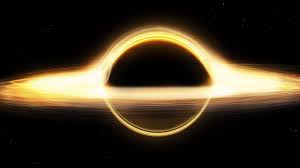Stargazers with the European Southern Observatory (ESO) utilize the Very Large Telescope (VLT) to filter the sky looking for stars, dark openings, cosmic systems, and planets to study. As of late, stargazers utilized the VLT to recognize the nearest pair of supermassive dark openings to Earth at any point found. In the end, the dark opening team will converge into a solitary monstrous dark opening. The revelation is situated in a universe called NGC 7727, which lies in the heavenly body Aquarius.
While these supermassive dark openings are the nearest to Earth at any point found, they are currently at a staggering separation from our planet of 89 million light-years. Notwithstanding, they are essentially nearer than the past nearest supermassive dark opening pair that was 470 million light-years away. As well as being the nearest pair of dark openings to Earth, the team likewise have an altogether more modest division than some other pair of known dark openings.
The pair in NGC 7727 has just 1600 light-years between them. While that is as yet a tremendous distance, space experts bring up this is the initial time pair of supermassive dark openings have been found so near one another. A distance of 1600 light-years is not exactly a large portion of the partition of the past record holders. Normally, supermassive dark openings live in the focal point of worlds. In any case, they can become sets when worlds consolidate, putting them on an impact course that can require a long period of time before they combine.
The dark opening on the right half of the pair is in the center of NGC 7727 and has a mass almost 154 million times of the Sun. The other dark opening in the pair is fundamentally less monstrous at 6.3 multiple times that of the sun. Stargazers had suspected NGC 7727 had two dark openings yet had been not able to validate their premonitions in the past in view of the absence of high-energy radiation coming from the prompt environmental factors. The presence of high-energy radiation would have affirmed the dark openings existed.
The revelation of the supermassive dark openings without the discharge of high-energy radiation recommends there could be a lot more comparative dark openings stowing away in cosmic systems spread around the universe. Stargazers accept their discoveries could propose the complete number of supermassive dark openings in the realized universe is 30% higher than recently accepted. Finding more secret supermassive dark opening sets will become simpler when the ESO starts working its new Extremely Large Telescope in the not so distant future. The telescope will be set in the Atacama Desert in Chile. That telescope will have an instrument called HARMONI equipped for making disclosures like this altogether further away from Earth than is at present conceivable.

More Stories
This man has the world’s first 3D printed eye
Who Invented the Space Suit?
What Are Black Holes and How Do They Form?